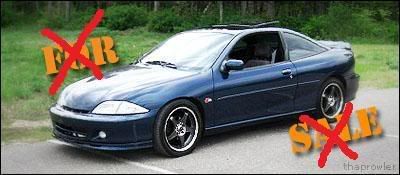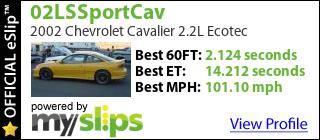I would like to know as well considering it is just as expensive as the other options.

FORGET GIRLS GONE WILD WE HAVE GOVERNMENT SPENDING GONE WILD!
I personally had both the innovate lc-1 and the PLX m300....to keep it simple go with the m-300 everyone praises the lc-1 but id say m-300.. direct plug and play. the lc-1 has all the calibration bs, and you have to do all this nonsense to get it to work in conjunction with hpt. where as the m-300 straight plug and play and I didnt like the idea of the lc-1 box sitting under the hood. I had alot of issues with innovate.Dont get me wrong a few of my buddies love their innovate lc1 and what not but if you are like me and want a simple but very cost efficient item go with the m-300....
but the autometer I've never worked with so I couldn't help you there.

I have an LM-1 and have no complaints, loggs your runs for those who don't have a laptop
I also have a brand new Innovate LM-1 sealed in the box with a carrying case that I no longer need...will sell cheap if interested

i have the lc-1 and yes there is some steps that you have to go through to have it calibrated and then have the voltage reading properly and everything (i dont know how other types work if the same or different) but its been fine for me. The first sensor we had took a @!#$ on us because when we removed it from our SS to put in the Kav my bf cleaned the carbon off the sensor so it'd be nice and clean for my car, and it stopped reading after that. But we believe it was due to the.. "product".. he used to clean the sensor with. He realized after his mind blank cleared that it was not actually an O2 sensor you can safely clean with break cleaner... it was a different style sensor. But @!#$ happens. right? lol.... the LC-1 has worked great ever sense we put the new sensor in.

Jazer {AzulKav} Turbo Chica wrote:i have the lc-1 and yes there is some steps that you have to go through to have it calibrated and then have the voltage reading properly and everything (i dont know how other types work if the same or different) but its been fine for me. The first sensor we had took a @!#$ on us because when we removed it from our SS to put in the Kav my bf cleaned the carbon off the sensor so it'd be nice and clean for my car, and it stopped reading after that. But we believe it was due to the.. "product".. he used to clean the sensor with. He realized after his mind blank cleared that it was not actually an O2 sensor you can safely clean with break cleaner... it was a different style sensor. But @!#$ happens. right? lol.... the LC-1 has worked great ever sense we put the new sensor in.
I seriously always wondered if you could clean them with brake cleaner. LOL That is a sucky way to find out not too.If I had not hapend to read this it could have just as easily been me finding out the hard way.

FORGET GIRLS GONE WILD WE HAVE GOVERNMENT SPENDING GONE WILD!
If you want something SIMPLE that does NOTHING but show you what your fair fuel is... then go with the Innovate DB Gauge Kit... comes in red or blue....
If you are interested, shoot me a PM or email, I will give you a rock bottom crazy low cheap price on it...
Thanks


Wade Jarvis wrote:Jazer {AzulKav} Turbo Chica wrote:i have the lc-1 and yes there is some steps that you have to go through to have it calibrated and then have the voltage reading properly and everything (i dont know how other types work if the same or different) but its been fine for me. The first sensor we had took a @!#$ on us because when we removed it from our SS to put in the Kav my bf cleaned the carbon off the sensor so it'd be nice and clean for my car, and it stopped reading after that. But we believe it was due to the.. "product".. he used to clean the sensor with. He realized after his mind blank cleared that it was not actually an O2 sensor you can safely clean with break cleaner... it was a different style sensor. But @!#$ happens. right? lol.... the LC-1 has worked great ever sense we put the new sensor in.
I seriously always wondered if you could clean them with brake cleaner. LOL That is a sucky way to find out not too.If I had not hapend to read this it could have just as easily been me finding out the hard way.
Glad I could help

Unfortunatly it was a 90$ finding though lol

if you get the LC1 make sure you have a laptop and be sure you plan on spending a day or two to PROGRAM IT
a lot of people bash it because its a lot more accurate than other widebands on the market, and regardless of its quirks, its head and shoulders above the rest in terms of accuracy.
there's nothing like putting a wideband in your car so you can street-tune for an 11:1 air fuel, to throw your car on the dyno and find out its actually richer or leaner.
the innovate lets you recalibrate the controller for the deteriroration of the sensor. so as the sensor ages, the reading is still accurate.
there's guidelines in the instruction manual and on innovates website on sensor positioning and care, I strongly suggest you READ them before installation.
also, the innovate can register and report data so fast that it'll actually read the vacant area inbetween cylinder pulses. this usually leads to asinine AFR readings and the like... this requires programming on the gauges part through the innovate software that comes with the wideband.
and one more time I can't emphasis enough the importance of PROGRAMMING
the XD-16 gauge kit is pretty nifty in its display abilities, but the regular non programmable gauges do the job as well displaying the AFR. but bear in mind, you still have to program the controller.
and if you use it in conjunction with HPT, read the sticky over there on doing a voltage offset calibration.

DaFlyinSkwirl (PJ) - BPU++ wrote:if you get the LC1 make sure you have a laptop and be sure you plan on spending a day or two to PROGRAM IT
a lot of people bash it because its a lot more accurate than other widebands on the market, and regardless of its quirks, its head and shoulders above the rest in terms of accuracy.
there's nothing like putting a wideband in your car so you can street-tune for an 11:1 air fuel, to throw your car on the dyno and find out its actually richer or leaner.
the innovate lets you recalibrate the controller for the deteriroration of the sensor. so as the sensor ages, the reading is still accurate.
there's guidelines in the instruction manual and on innovates website on sensor positioning and care, I strongly suggest you READ them before installation.
also, the innovate can register and report data so fast that it'll actually read the vacant area inbetween cylinder pulses. this usually leads to asinine AFR readings and the like... this requires programming on the gauges part through the innovate software that comes with the wideband.
and one more time I can't emphasis enough the importance of PROGRAMMING
the XD-16 gauge kit is pretty nifty in its display abilities, but the regular non programmable gauges do the job as well displaying the AFR. but bear in mind, you still have to program the controller.
and if you use it in conjunction with HPT, read the sticky over there on doing a voltage offset calibration.
Perhaps for single wideband readings...Although it still uses the mediocre Bosch sensor, so it clearly isn't better than
ALL of the other single sensor widebands out there anyways... maybe just the more affordable ones. My NGK insists that you calibrate once a month as well (manually however...and it should be free-air calibrated for accuracy), but I'm sure the inovate samples faster than it.
-
"Youth in Asia"...I don't see anything wrong with that.
free air calibs are what should be done every time anyway. residual crap in the exhaust would futz the whole process.
you are correct on the sensor the bosche is considered the inferior unit

So what sensor or sensors are considered better than the bosch?

FORGET GIRLS GONE WILD WE HAVE GOVERNMENT SPENDING GONE WILD!
karo wats the price on the gauge u wre talking about

Wade Jarvis wrote:So what sensor or sensors are considered better than the bosch?
NGK makes the most accurate/most durable sensor available to the general public that I'm aware of...but the sensor itself is around $180. Sadly, I too have the Bosch even though I have an NGK brand wideband, lol.
EDIT: I may have overshot the price a little. But it still costs at least twice as much as the Bosch...
click
Edited 1 time(s). Last edited Friday, October 19, 2007 10:14 PM
-
"Youth in Asia"...I don't see anything wrong with that.
Hmm well i ended up getting the innovate a few days ago..wish i had read skwirls post since i dont have a laptop as of yet..might have to find a cheap one...
I got the INNOVATE XD-16 / LC-1 so its all innovate products..no third party and its just to get a feel for my a/f so i dont blow the engine up,,phil
HELFENBEIN wrote:Philly D wrote:Hmm well i ended up getting the innovate a few days ago..wish i had read skwirls post since i dont have a laptop as of yet..might have to find a cheap one...
Depending on which Innovate you purchased, and what you want to use it for, you might not need one. He did kind of throw around the word "programming" quite a bit without explaining it and might have scared some people off.
First off, with the Innovate models, your programming options are limited to the following (copied from the instruction manual):
1. Change the relationship between Lambda and AFR
-Unless you plan on solely tracking Lambda values and not AFR, you won't ever touch option 1.
2. Upgrade and change the software
-Pretty self-explanatory. You go in, click on the update button, it updates. This can be done from a desktop just fine.
3. Change the output characteristics of the Analog outputs
-This would be were programming would be involved, but, for the most part, will only be needed if you're running a third-party gauge, using the wideband to simulate a narrow-band, or if you plan on burning some exotic mixture of fuels that requires it's own custom-devised stoichiometric value.
-As for the gauges end of it, let's say for example you're using the Innovate LC-1 controller and want to add an Innovate DB gauge to it. The DB gauge is already set to use the LC-1's analog output 2 factory settings (0V = 7.35 AFR and 5V =
22.39 AFR), so to get a baseline operational display you simply have to connect them in this manner, no programming involved. Now, if you want to get more in depth with this, yes, you can hit up the advanced options and change the values for events like warm up and errors, but this isn't necessary.
-Now, in an instance like mine where I am using an Innovate LM-1 in association with an Auto Meter Sport Comp air-to-fuel gauge, "programming" was needed (just to clarify, the LM-1 has it's own built in display, but it's not all that large, and I didn't feel like mounting the entire box on my dash somewhere). Programming is needed in this scenario because the Auto Meter gauge is designed to display narrow-band 02 outputs in a range of 0-1 Volts, where 0 = rich, 1 = lean, and the middle is stoichiometric. So, to make the analog output on my LM-1 feed numbers to the Auto Meter gauge that it can understand, the output values had to initially be programmed to 1V = 8 AFR and 0V = 18 AFR. This way, the Auto Meter gauge is interpreting values from 0V to 1V as it was designed to, and those values correspond with AFRs on the gauge's display that "make sense".
-This is where the programming can become time consuming for either the simulation of a narrow-band or for outputting to a third-part gauge. You need to make sure that the wideband is outputting the correct values for your specific application. An educated guess or trial-and-error will start you off, which will then be narrowed down, and finally completed with minute fine-tuning. A laptop comes in handy as you can drive, observe results, adjust, drive, observe results, adjust, and so on, whereas a desktop will limit you to, drive, observe results, go home, remove controller, connect to computer, adjust, re-install, drive, observe results, go home...
So, if you're just simply using your Innovate wideband to get an idea of your AFRs, you could (in most instances) just connect that to an Innovate gauge and take a visual reading of the output it provides and/or check the logs. If you want to simulate a narrow-band output for usage with your car or use a third-party AFR gauge, chances are you're going to be spending a fair bit of time in front of your computer.
if you're using HPT in tandem with the LC-1 then don't think I threw programming around for fun.
if this is the case, please follow this link to HPTuners forum for setting up the LC-1 to be used with HPT
offset voltages
more inormation on LC-1

For right now ill be using the gm reflash unless i cant find a 2.5 bar map. Then im hoping shifted's setup will be available..if not then i may may use hpt..phil






Unfortunatly it was a 90$ finding though lol







